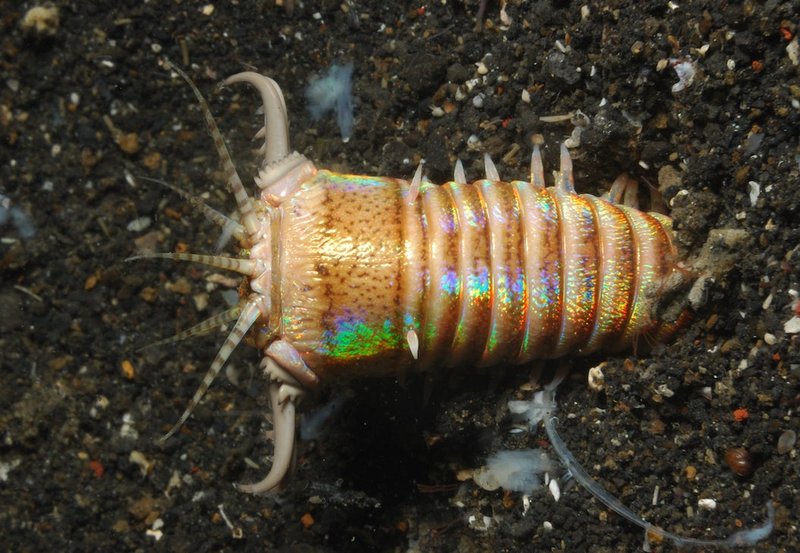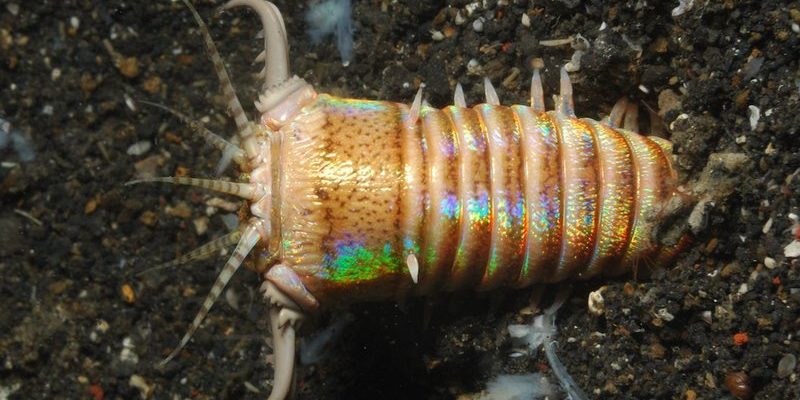
So, what is it about these worms that earns them such a frightful reputation? Understanding their unique traits and behavior can help demystify the “nightmare” title. Let’s dive into the world of Bobbit worms, unraveling their secrets and learning why they have earned their fearsome nickname.
What Exactly Is a Bobbit Worm?
Bobbit worms, scientifically known as *Eunice aphroditois*, are long, segmented marine worms found in coral reefs across the world’s tropical oceans. These fascinating creatures can grow up to 10 feet long, though most are usually around 3 feet. They have a striking appearance, featuring a colorful, segmented body that can vary from bright green to deep red. With a set of pronounced jaws and sharp bristles, Bobbit worms are as beautiful as they are intimidating.
You might be wondering how these creatures go about their day. Bobbit worms bury themselves in the sand or mud, leaving just their colorful heads exposed, which looks a bit like a flower peeking out from the ground. This camouflage helps them ambush unsuspecting prey, such as small fish and crustaceans, as they wander too close. Imagine being at a picnic and suddenly discovering that your blanket is hiding a hungry predator; that’s the kind of surprise these worms provide underwater!
The Predatory Skills of Bobbit Worms
Here’s the thing: Bobbit worms are highly effective hunters. They have an incredible sense of touch and can detect vibrations in the water, alerting them to potential meals. Once prey comes close, they strike with lightning speed. Their two powerful jaws snap down with precision, grabbing onto unsuspecting fish or crustaceans before they even know what hit them.
You might think of a Bobbit worm as a blend of a snake and a flower—hidden in plain sight and quick to react. These worms use their segmented bodies to strike quickly and efficiently. When they grab their prey, they pull it back into their burrow, where it becomes dinner. It’s a gruesome yet fascinating spectacle that showcases nature’s brutal beauty.
But it doesn’t stop there. Bobbit worms can regenerate if they lose a part of their body during a fight. This ability to regrow lost segments adds to their reputation as resilient and fearsome predators. After all, who wouldn’t be intimidated by a creature that can bounce back after a setback?
Where Do Bobbit Worms Live?
Bobbit worms thrive in tropical and subtropical environments, often found in shallow waters of coral reefs, muddy bottoms, or sandy substrates. They prefer areas with plenty of hiding spots, allowing them to blend in with their surroundings. This adaptability makes them a common sight in the Caribbean Sea, the Indo-Pacific region, and even the Great Barrier Reef.
Their habitats are crucial for their survival. Coral reefs offer both food and protection, creating a perfect home for these creatures. However, their presence can also indicate the health of the reef environment. A thriving Bobbit worm population usually means the reef is in good condition, as they rely on various organisms in these vibrant ecosystems.
While Bobbit worms play a role in their habitats, their predatory nature means they can affect the populations of other marine creatures. If their numbers grow too large, they can impact the balance of the ecosystem, making it vital to keep an eye on their populations.
Bobbit Worm Behavior: More Than Meets the Eye
Honestly, the behavior of Bobbit worms is just as intriguing as their appearance. These worms are primarily solitary creatures. They spend most of their lives hidden away, avoiding predators and other threats. However, when it’s time to mate, they can venture out from their burrows to find potential partners. During mating, they engage in a fascinating display of color changes and movements, which can be as captivating as watching a dance.
Additionally, Bobbit worms are known for their intelligent hunting strategies. They don’t just strike at anything that moves; they assess their surroundings and wait for the right moment to pounce. This patient approach to hunting makes them highly effective predators and adds to their reputation as the “nightmare of the reef.”
Have you ever seen a movie where the scariest monsters are the ones that don’t just charge at you but instead bide their time and strike when you least expect it? Bobbit worms embody that suspenseful, terrifying quality in the underwater world.
Are Bobbit Worms Dangerous to Humans?
You might be concerned about encountering a Bobbit worm during a dive or snorkeling adventure. While they can be intimidating, Bobbit worms are generally not a threat to humans. Their primary focus is on smaller fish and invertebrates. However, if provoked or stepped on, they can bite—which might hurt due to their sharp jaws. It’s similar to a bee sting, not life-threatening but definitely unpleasant.
To avoid any unwanted encounters, it’s essential to be aware of your surroundings while exploring reefs. Diving with a guide can also help ensure your safety. Remember, Bobbit worms don’t want to interact with you; they’re more interested in their next meal.
If you’re truly fascinated by these creatures, consider observing them from a distance. Many divers enjoy capturing video or photographs of these remarkable animals without coming too close. This way, you can appreciate their beauty without risking a bite!
The Role of Bobbit Worms in the Ecosystem
Bobbit worms might be seen as terrifying predators, but they play a significant role in maintaining the health of coral reef ecosystems. By preying on smaller fish and invertebrates, they help control populations, ensuring that no single species dominates the reef. This balance is crucial, as it supports biodiversity and the overall health of the reef.
Moreover, when Bobbit worms capture prey, they provide nutrients back to the environment as other marine creatures feed on carcasses or as the worms themselves decompose. It’s a cycle that showcases nature’s interconnectedness. Every creature, even the ones dubbed “nightmares,” has its place in the grand scheme of things.
Understanding the role of Bobbit worms can help shift perspectives. Instead of viewing them solely as predators, we can appreciate their contribution to the ecosystem. In a way, they symbolize the complexity and beauty of marine life, where every creature has a purpose.
So, why are Bobbit worms called the nightmare of the reef? Their lethal hunting skills, striking appearance, and ability to blend seamlessly into their surroundings certainly contribute to this reputation. But beneath the fearsome title lies a creature integral to the delicate balance of coral reef ecosystems.
Next time you think of these nightmares, remember their beauty, resilience, and ecological importance. It’s a reminder that nature can be both terrifying and beautiful, and sometimes understanding the “nightmares” can help us appreciate the wonders of the underwater world. Whether you’re a diver or just a curious observer, there’s always more to learn about the remarkable creatures that inhabit our oceans.

